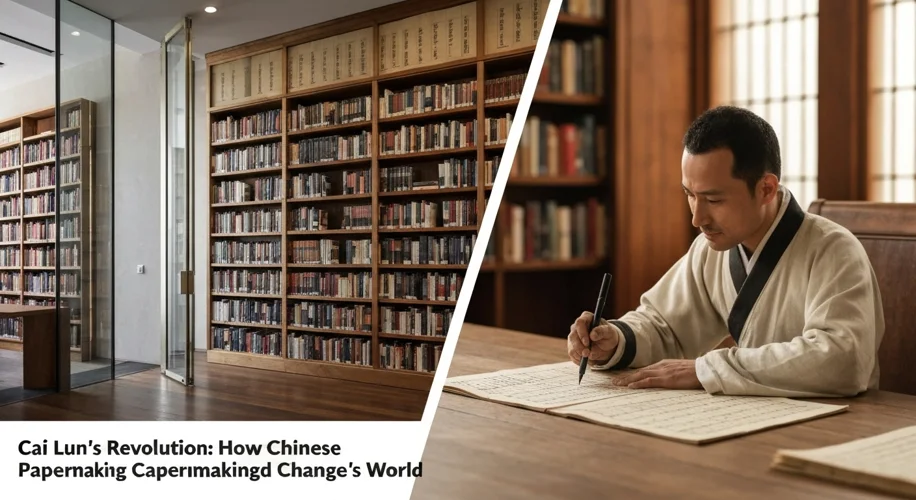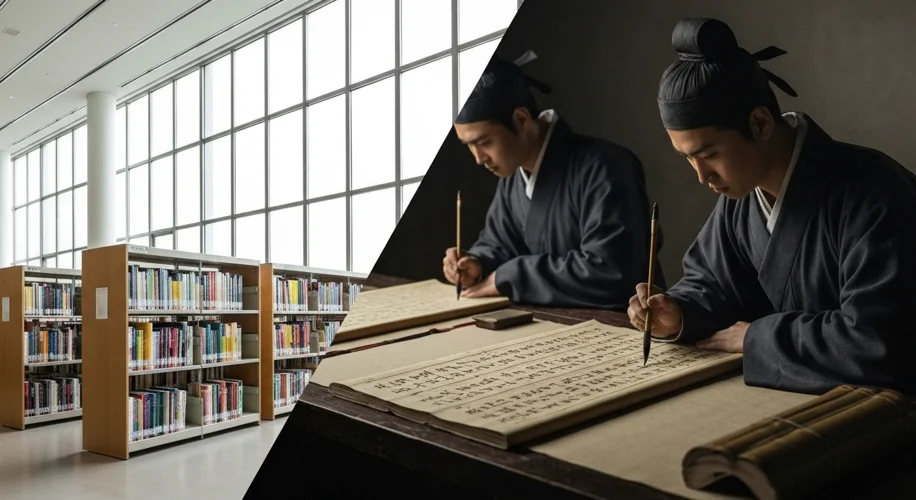Picture this: the year is roughly 105 AD. The Han Dynasty in China is a powerhouse, a civilization built on intricate bureaucracy, vast libraries, and the meticulous recording of history. Yet, their primary writing materials – heavy bamboo strips, cumbersome silk, and expensive parchment – were like trying to carry a library on your back. Information was precious, yes, but its dissemination was slow, costly, and often unwieldy. Then, a court eunuch named Cai Lun stepped into the annals of history, not with a sword or a decree, but with a bundle of rags and plant fibers.

Before Cai Lun, the story of writing materials in China was a tale of gradual evolution. Early inscriptions graced oracle bones and bronze vessels. Then came bamboo and wooden slips, which, while an improvement, were heavy and brittle. Silk offered a lighter, more luxurious alternative, but its exorbitant cost confined it to the elite and official documents. The quest for a more accessible and practical medium was a constant undercurrent in Chinese intellectual life.
Cai Lun, serving Emperor He of Han, is credited with perfecting the papermaking process as we know it. He wasn’t necessarily the inventor of paper from scratch; evidence suggests earlier, cruder forms existed. However, Cai Lun’s genius lay in his systematic approach and his ability to synthesize existing techniques with readily available materials. He experimented tirelessly, combining tree bark (often from mulberry trees), old rags, fishing nets, and hemp waste. These ingredients were pounded into a pulp, mixed with water, and then strained through a fine screen onto a flat surface. As the water drained, it left behind a thin, even layer of matted fibers. This “sheet” was then pressed and dried, creating a remarkably lightweight, flexible, and surprisingly durable surface – paper.
The impact of Cai Lun’s innovation was nothing short of revolutionary. Suddenly, the cost of writing materials plummeted. Information, once a privilege of the few, could now be recorded and shared with unprecedented ease. Imagine the scribe, no longer struggling with heavy bamboo, but gracefully unfurling a crisp sheet of paper, his brush dancing across its surface. Libraries could expand, scholars could disseminate their ideas more widely, and government decrees could reach further and faster. Little did Cai Lun know that his humble creation would become the bedrock of global literacy and communication.
The secret of papermaking was fiercely guarded by the Chinese for centuries. It wasn’t until the 8th century AD, over 600 years after Cai Lun’s breakthrough, that the technique slowly began to spread. A pivotal moment occurred during the Battle of Talas in 751 AD, where Chinese prisoners of war, skilled in papermaking, were reportedly captured by the Arab forces. This marked the beginning of paper’s journey westward.

From the Islamic world, paper traveled through North Africa and into Europe, gradually replacing the more expensive parchment and vellum. By the 12th century, paper mills were established in Spain and Italy, and by the time of the Renaissance, paper was becoming a common commodity across the continent. This availability fueled the explosion of knowledge, directly contributing to the flourishing of art, science, and philosophy. The printing press, invented centuries later, would find its perfect partner in paper, igniting an information revolution that fundamentally reshaped European society and, ultimately, the world.
Cai Lun’s contribution, born from a desire for efficiency and practicality, was a quiet revolution. It empowered individuals, facilitated the growth of empires, and preserved the collective memory of humanity. Without his refined process, the great works of literature, philosophy, and science might have remained confined to small circles or lost to time. The humble sheet of paper, an invention often taken for granted, stands as a testament to how one man’s ingenuity can unlock the potential of an entire civilization and, indeed, all of humankind.

The development of papermaking in China, spearheaded by Cai Lun, wasn’t just about creating a new writing material; it was about democratizing knowledge. It was about making the written word accessible, affordable, and transportable. This simple yet profound innovation laid the groundwork for everything from the spread of religious texts and philosophical treatises to the daily functioning of governments and the very concept of mass communication. Cai Lun’s legacy is written on every page, in every book, and on every document that shapes our modern world.

